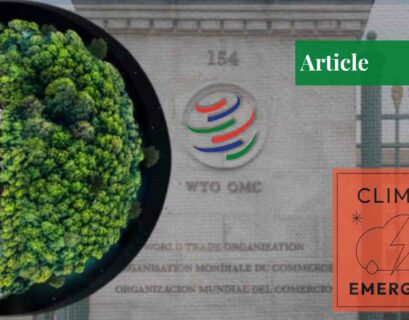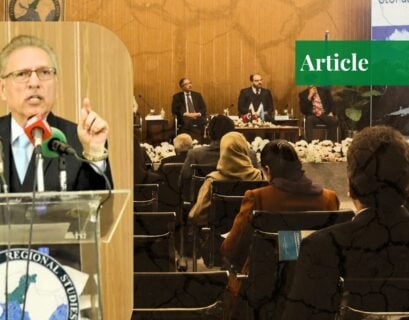Mr Muhammad Danish Raza is studying economics at the National Defence University, Pakistan.
Unequal Economic Prosperity
As per the projection of IMF, the total volume of the world’s GDP has stretched out to $93.86 trillion according to statistics times. The United States, China, Germany, Japan and Russia collectively contribute over $50 trillion to the world’s total GDP which is significantly more than half of the world’s total share of GDP. The remaining 190 countries of the globe account for less than half of the world’s total GDP.
This GDP distribution pattern endorses unequal economic growth resulting in unbalanced economic prosperity on the planet. The higher gross domestic product of these countries is evidence of the enormous production of goods and services in these sectors of the earth. Consequently, the production processes in such regions account for the consumption of an abundance of fossil fuels.
As a result of these burning processes for manufacturing purposes, powerful greenhouse gases such as methane, carbon monoxide, carbon dioxide, oxides of Nitrogen and Sulphur, and volatile organic compounds are discharged into the atmosphere which account for the formation of smog, rising average temperature of the Earth and ultimately leading towards global warming which is steering the planet towards climate crises.
Conferences on Climate Change
During the second half of the 20th century, international governing bodies recognized it as the need of the hour to address this rapidly emerging serious dilemma. Since then, United Nations met together on a number of occasions starting from the 1972 Stockholm Conference of Sweden which was the UN’s first conference on the environment.
Later on, the 1992s Rio de Janeiro Summit of the United Nations Framework Convention on Climate Change was aimed at reviewing economic growth and ensuring environmental protection. It was further extended by the treaty of the Kyoto Protocol to bring down the emission of greenhouse gases. In 1995, the first Conference of Parties (COP) on climate change was held in Berlin, Germany.
The Annual Conference of Parties (COP)
The COP takes place annually in different states with the purpose of revising earlier and framing new strategies for the implementation of the Paris Agreement to restrict the average temperature rise of the Earth below 2°C or preferably limiting it to 1.5°C above pre-industrial levels and to reach net-zero emission of greenhouse gases by the middle of the current 21st century.

No doubt, these concerns of the United Nations are appreciable, but the framework required to meet the targeted goals regarding climate change lacks a tangible approach on a practical basis. The four-point agenda of the 26th Conference of Parties which was held in Glasgow, Scotland between 31st October to 12th November 2021, is to limit temperature rise below 2°C, protect communities and natural habitats, mobilize finance, and take collective efforts to confront the climate disaster.
However, it falls short in terms of practical directions to meet those benchmarks which were set itself by COP 26. For instance, according to the sixth assessment report of the Intergovernmental Panel on Climate Change (IPCC), in order to achieve the 1.5°C temperature goal, the world must need to cutoff CO2 emissions by 45 percent before 2030 and shift towards 70 to 80 percent of world’s energy towards renewable resources by 2050.
Deficiencies in COP 26
Such a massive requirement demands collective initiatives from every part of the world. China and Russia, collectively contributing nearly 20 percent to the world’s GDP and consequently releasing significant amounts of CO2 into the atmosphere, did not attend the 26th Conference of Parties which indicates a lack of cohesion regarding fulfilling this agenda.
Secondly, COP 26 missed out on adopting a practical approach towards a newly emerging threat regarding climate crises which includes the impacts of climate change on developing parts of the world. According to the global climate risk index, eight out of ten most affected countries by climate change are low to middle-income countries having the low financial capacity to cope with extreme weather.
COP 26 did not take any serious practical measures towards the implementation plan of 2009 which was reaffirmed in 2015 by the Paris Agreement to allocate $100 billion dollars every year to the developing world in order to cope with climate issues. This approach instances a trust deficit between the developing and the developed world in terms of working in tandem to confront climate crises.
COP 26 did not direct its point of focus towards the future of oil and petroleum-based economies. Petroleum products have become an unavoidable necessity on the planet and it is a fact that even with the invention of substitutes such as electric transportation and environmentally friendly sustainable energy resources such as wind, solar and hydropower plants, oil-based economies will rely on the trade and consumption of petroleum products.
27th Conference of Parties in Egypt
Today, even those countries which are operating major production units in the world, rely heavily on consuming fossil fuels and petroleum for energy. In the current scenario, it is a fundamental imperative to work on searching for possibilities which can make the burning processes as less polluting as possible. After crafting helpful strategies, the implementation plan should be made part of the future conferences of parties on climate change.
Conclusively, the 27th Conference of Parties must address the concerns of China and Russia through dialogues and make them agreeable to pursuing collective struggles to achieve environmental goals. Besides planning to invest in environmental friendly pathways, COP 27 should practically adopt the principle of allocating $100 billion to the developing world annually for encountering the impacts of climate crises.
At last, COP 27 must formulate a team of world experts to work on the formation of mechanisms for oil and coal consumption units across the world to reduce environmental pollution to the lowest possible levels. After framing it out, future Conference of Parties should incorporate it into their agendas on climate change. By simultaneously working in these multiple dimensions, the efforts of international agendas will be more productive towards accomplishing their climate targets.
If you want to submit your articles, research papers, and book reviews, please check the Submissions page.
The views and opinions expressed in this article/paper are the author’s own and do not necessarily reflect the editorial position of Paradigm Shift.



















